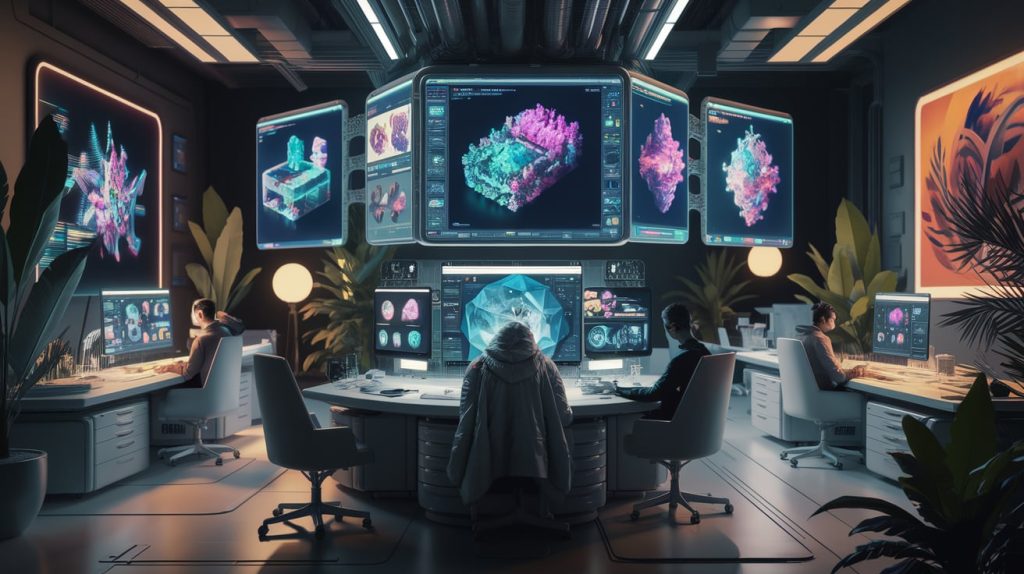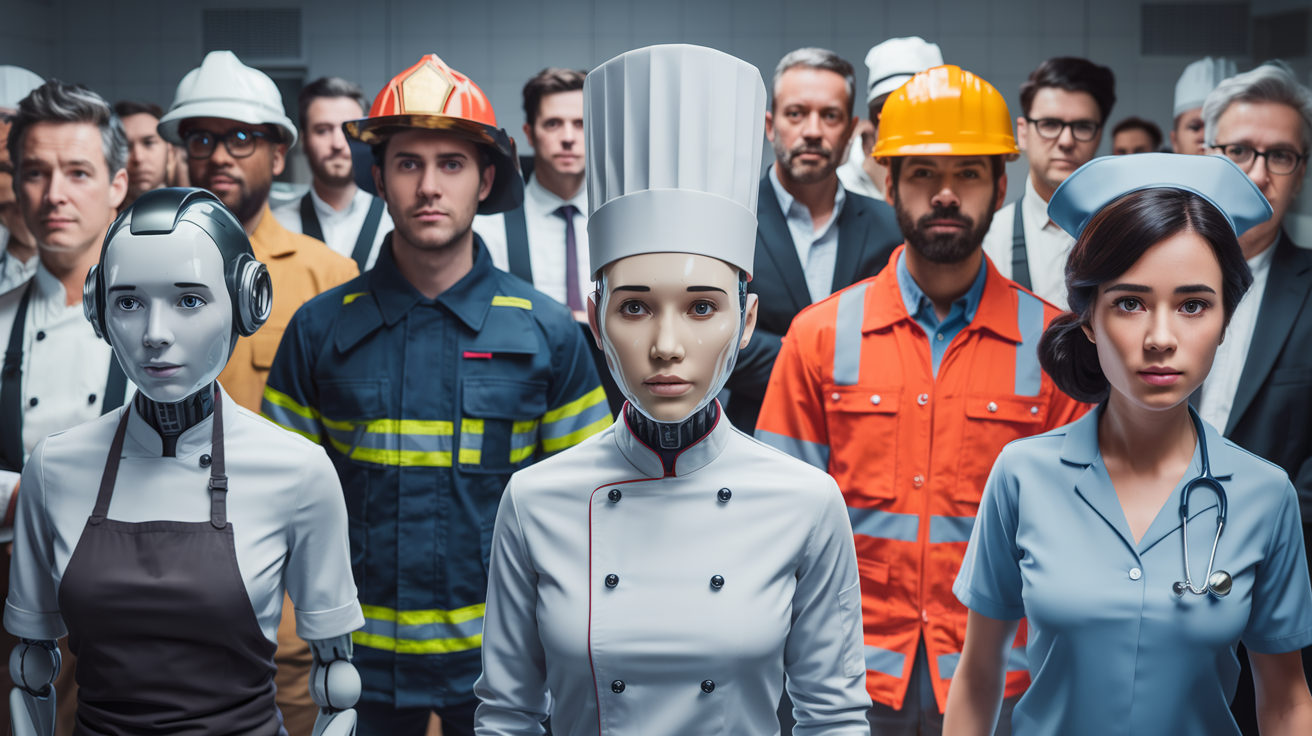The advent of artificial intelligence (AI) has significantly transformed various industries, and AI 3D modeling is no exception. As AI technology continues to evolve, the quality of 3D models produced through AI-driven tools is improving rapidly. This article explores the evolution of 3D modeling, highlights new tools—both free and paid—and discusses the exciting possibility of integrating voice into these models.
The Evolution of 3D Modeling
Early Days of AI 3D Modeling
The journey of 3D modeling began in the 1960s with the introduction of computer-generated imagery (CGI). Early models were simplistic, relying on basic geometric shapes and manual techniques. As technology progressed, the 1980s saw the emergence of procedural modeling, where artists could create complex shapes using algorithms rather than just geometric primitives. This advancement laid the foundation for more sophisticated modeling techniques.
The Rise of Machine Learning
By the late 1990s and early 2000s, machine learning began to influence 3D modeling. Neural networks and genetic algorithms were employed for tasks such as shape recognition and optimization, marking a pivotal shift towards more intelligent and adaptive modeling methods. These developments set the stage for the integration of AI into 3D modeling processes.
Generative Adversarial Networks (GANs) and Deep Learning
The introduction of Generative Adversarial Networks (GANs) in the 2010s revolutionized the creation of realistic 3D models. GANs, developed by Ian Goodfellow, allowed for the generation of high-quality models from various inputs, including images and text. This period also saw the rise of deep learning algorithms, which enhanced the ability to create detailed 3D representations.
Current Trends and Future Directions
Today, AI 3D modeling tools are at the forefront of digital design, enabling users to create intricate models quickly and efficiently. These tools leverage advanced algorithms to streamline the modeling process, significantly reducing the time and expertise required to produce high-quality 3D assets. As we look to the future, the integration of AI into 3D modeling is expected to become even more sophisticated, with tools that can learn from user input and adapt to individual design styles.
Tools that can come handy while creating your AI 3D Models

Free Tools for AI 3D Modeling
- Ideogram : Author’s Choice. Probably the best and free AI image tool available.
- Spline AI: A browser-based collaborative tool that allows users to create 3D content and interactive experiences. Its free basic subscription makes it accessible for beginners.
- Tripo AI: Launched in late 2023, Tripo AI generates 3D models from photos or text commands in seconds. It offers a free package that allows for the creation of up to 10 models per month.
- 3DFY.ai: This tool specializes in generating 3D models within predefined categories and offers a free trial with 10 generation credits.
Paid Tools for AI 3D Modeling
- Meshy.AI: This platform enables users to create detailed 3D models from simple text and image inputs in under a minute. It operates on a subscription model, providing additional features for paid users.
- Stable 3D: Leveraging advanced AI technology, Stable 3D delivers precise and lifelike 3D models from simple text descriptions, making it suitable for various professional applications.
- Alpha3D: This Estonian-based platform utilizes generative algorithms to swiftly translate text descriptions or 2D images into intricate 3D models, streamlining the modeling process for artists and designers.

Adding Voice to your AI 3D Modeling projects
One of the most innovative developments in AI 3D modeling is the ability to add voice to 3D models. This feature enhances user interaction and engagement, particularly in applications such as virtual reality (VR) and gaming. By integrating voice synthesis technologies, creators can give their 3D models distinct personalities and interactive features, making them more relatable and immersive.
Eleven labs makes this reality, They have the best voice over options available
What are the main benefits of using AI in 3D modeling
- Enhanced Creativity and Design Flexibility AI significantly boosts creativity by enabling designers to explore a wider array of design possibilities. Traditional modeling often requires extensive time and skill to create complex designs. However, AI algorithms can generate intricate and innovative AI 3D modeling with minimal input.
- Streamlined Workflow and Increased Efficiency One of the most notable benefits of AI in 3D modeling is the automation of labor-intensive tasks. AI can handle processes such as sculpting intricate details, creating realistic textures, and optimizing models for different use cases.
- Improved Precision and Accuracy AI algorithms can maintain a high level of detail and accuracy, which is crucial in fields like manufacturing and architecture. Human-driven modeling is often prone to errors, but AI can consistently produce precise models that meet exact specifications.
- Personalization and User Engagement AI enables the creation of customized 3D models tailored to individual user preferences. By analyzing user data, AI algorithms can generate designs that resonate with specific tastes and needs.
- Adaptive Learning and Continuous Improvement AI systems in 3D modeling are capable of adaptive learning, meaning they can improve their performance over time by learning from previous projects.
- Real-Time Feedback and Prototyping AI facilitates real-time feedback loops during the design process, allowing designers to make immediate adjustments based on user reactions.
- Cultural Sensitivity in Global Markets When designing for global markets, understanding local cultural norms is essential. AI can analyze 3D designs with a deep awareness of local cultural sentiments, ensuring that products resonate with local values and avoid potential cultural missteps.

Applications of AI 3D Modeling Across Industries
- Gaming: In video games, AI-generated 3D models can be animated and voiced, creating dynamic characters that respond to player actions.
- Virtual Reality: In VR environments, adding voice to avatars enhances the realism of interactions, providing users with a more engaging experience.
- E-commerce: Retailers can use voiced 3D models to showcase products, allowing customers to interact with virtual representations and receive information in real-time.
Here’s how AI 3D Modeling can be misused
The rise of artificial intelligence (AI) in content creation has opened up new avenues for innovation, but it also presents significant risks of misuse. As AI technologies become more sophisticated, the potential for unethical applications increases, leading to concerns about copyright infringement, misinformation, and the erosion of creative integrity.
- Copyright Infringement
- Plagiarism and Content Duplication
- Misinformation and Manipulation
- Loss of Attribution and Recognition
- Ethical and Legal Challenges
The legal landscape surrounding AI-generated content is still evolving, leading to uncertainties about ownership and copyright. Determining who holds the rights to AI-generated works—whether it is the developer, the user, or the AI itself—remains a complex issue. This ambiguity can lead to potential legal conflicts and may discourage innovation in AI applications.
Conclusion
The evolution of AI in 3D modeling has significantly transformed how creators approach digital design. With a variety of free and paid AI 3D modeling tools available, both novice and experienced designers can harness the power of AI to produce high-quality 3D models efficiently. The ability to add voice to these models further enhances their utility across various industries, paving the way for more interactive and engaging digital experiences. As AI technology continues to advance, the future of 3D modeling looks promising, with endless possibilities for creativity and innovation.
It’s a request for everyone please use the AI 3D Modeling tools in an ethical and not harm or scam.
Also read the latest Article on Sunlight as a service , Youtube as a Service















2 thoughts on “The Future of AI 3D Modeling: When Will Quality Models Become Mainstream?”